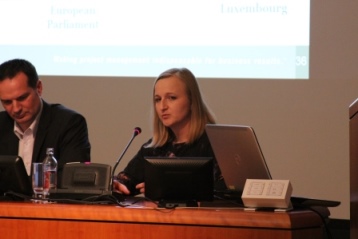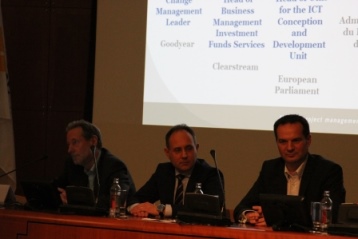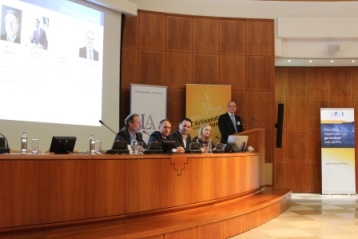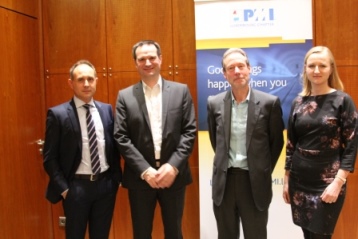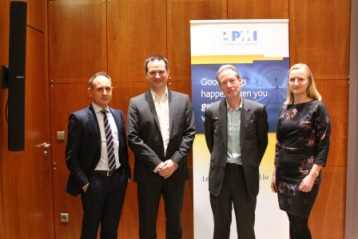Globalization and constant innovation of technology have resulted in a constantly evolving business environment. Concurrently, the borderless economy has increased the markets and opportunities for more growth and revenue while, the growth in technology has augmented the availability and therefore accountability of information and knowledge.
Easily accessible information has resulted in unprecedented scrutiny from stakeholders and the media and pressure on management. Phenomena such as social media and mobile adaptability have revolutionized business. And the effect of all these is an ever-increasing need for change, and therefore change management.
It is not difficult to understand why today, organizational change relevant projects are the 4th most common type of projects undertaken worldwide, whether they deal with installing new technologies, downsizing, restructuring, or trying to change corporate culture. Despite some individual successes, however, change remains difficult to pull off, and few companies manage the process as well as they would like. Most of companies’ initiatives have had low success rates and as it is stated in HBR June 2000 issue article Cracking the Code of Change: “The brutal fact is that about 70% of all change initiatives fail”. A claim supported also by McKinsey and Company’s 2015 Change Management Survey among business executives stating that the percent of change programs that are a success today is no more than 30%.
The PMI Luxembourg Chapter event – sponsored by Lux-Advisory – aimed at discussing successful practices and lessons learned about change management projects in Luxembourg in the public, industrial and financial sectors. More than 100 project management professionals gathered to listen on their experiences and engage with:
- Ludovic Delépine, Head of Unit for the ICT Conception and Development Unit, European Parliament,
- Ludwig Balmer, Head of IT, Administration du Personnel de l'Etat,
- Anna Ciszek, Change Management Leader, Goodyear,
- Steve Quinn, Head of Business Management Investment Funds Services, Clearstream.
Ludovic Delépine initiated the event by discussing on the necessity and importance of Business maps in supporting change management, elaborating on the successful paradigm in European Institutions. As he claimed: “running IT services to support business services is neither easy nor calm”. There is nothing like a “business as usual” environment due to many parameters like new rules and regulations, data protection requirements, innovation and technology issues, new products and services to be supported, obsolescence of resources and solutions, even because of more general events like BREXIT. He stated emphatically that: “if you don’t drive change you enter into the circles of hell and abandon your hopes to quote Dante Alighieri” because in change management endeavors there is always a gap between customers’ expectations and final offers. Driving the change will participate to reduce this gap. In large organization formations, as in the European Institutions, a useful and currently necessary tool is Business maps, a formal business framework aimed at describing how the organization works at the highest description level. Business maps make the organization picture clearer; they facilitate the identification of existing solutions, reinforce synergies and thus drive solutions. Specifically, in the case of the European Institutions, the process mapping referred to business areas or practices on a hierarchical leveling that were divided in four categories: steering, core, enabling and supporting. The expertise and knowledge sharing across 16 European Institutions and Bodies practices and approaches due to this recording supports heavily today the interoperability, standardization and time-to-market of offered services upon change requests.
Ludwig Balmer, continued by presenting the benefits of the use of a modelling framework for documenting the full IT system project specifications and its changes over the time. He elaborated on the successful use of the Prometa framework (Enterprise Business Architecture framework, based on ARIS modeler) followed currently by several Luxembourgish administrations. As he underlined, the existence of many different projects running simultaneously by different suppliers were creating a huge handling issue as specification documents were prepared by different tools in various formats, there was a heterogeneity in the level of detail and consequently there were a big difficulty in updating, consolidating and finally managing the documentation of projects. The use of an enterprise business architecture framework, like Prometa and specifically its IT system specification document generation component (Prometa Spec.) provides a significant increase in the quality of change projects management through a global and clear vision of the systems to be developed and shared with all parties involved. It also helps mitigating risks more effectively, sustain methodological consistency across the projects, facilitate requirements tracking, capitalize on projects’ information and thus decrease also projects’ costs.
The panel discussion, that followed the two presentations, addressed the issues of dimensions of change in the context of an organization, the impact of legal and regulatory constraints on financial change management projects, the listing of steps/actions for an effective change management project and the major elements of success in such endeavors. All panelists agreed that focus on the human factor is one of the most critical success factors. As Anna Ciszek stated: “we need to understand human behaviors in order to make changes acceptable and adoptable and thus produce desired results”. Steve Quinn added that since “you can’t predict behaviors so you put the emphasis internal and then you think of your outside stakeholders”. Moreover, they emphasized the important role of communication with all stakeholders as a success condition of the projects while they underlined that project methodologies are not that important since you need to choose your approach on the basis of what your teams can use and understand. Older methodologies can serve as efficiently a change project. As Ludovic Delépine said: “if the cost of managing a change project is higher than executing it then there is no value”!
The panel proposed a five-step approach for the successful management of cultural change projects:
- Strong support by senior leadership not only in words but in action since 70% of the success is depended on them.
- Clarification of key desired people behaviors to drive change so people can visualize the desired manners.
- Focus not only on technical elements but on soft skills – “win the hearts of people”.
- Accountability of all hierarchical levels.
- One step at a time implementation to incorporate learnings as the projects goes on.
Finally, when the panel was asked about reasons of projects’ failure they indicated the absence of clear rules for people to follow, the complexity of solutions proposed, the absenteeism of attention to the economies of the new system and the non-development of prototypes to gain support from the users.
A few words about the Project Management Institute (PMI)
The Project Management Institute (PMI) is headquartered in the US, with nearly 500,000 members worldwide; it is a not-for-profit association with a mission to “Make project management indispensable for business results”.
Since 1969 the PMI has advanced careers, improved organizational success and matured the profession of project management through its:
- globally recognized standards and certification programs,
- extensive academic and market research programs,
- professional development opportunities such as PMI conferences, forums, webinars, …
- chapters and communities of practice,
- networking opportunities.
Athanasios KARAGEORGIADIS
PMI Luxembourg Chapter Volunteer







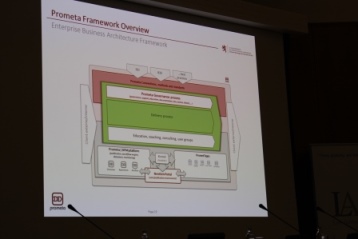

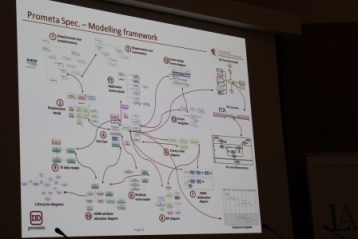



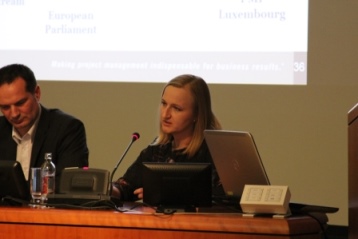
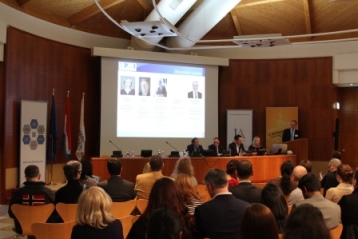
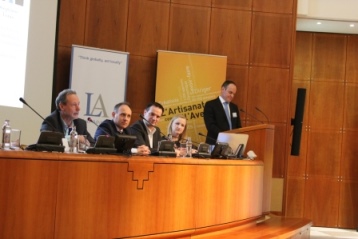
From left to right: Ludwig Balmer, Ludovic Delépine, Steve Quinn and Anna Ciszek.
Pictures:
Crista FILIP
PMI Luxembourg Chapter Volunteer

